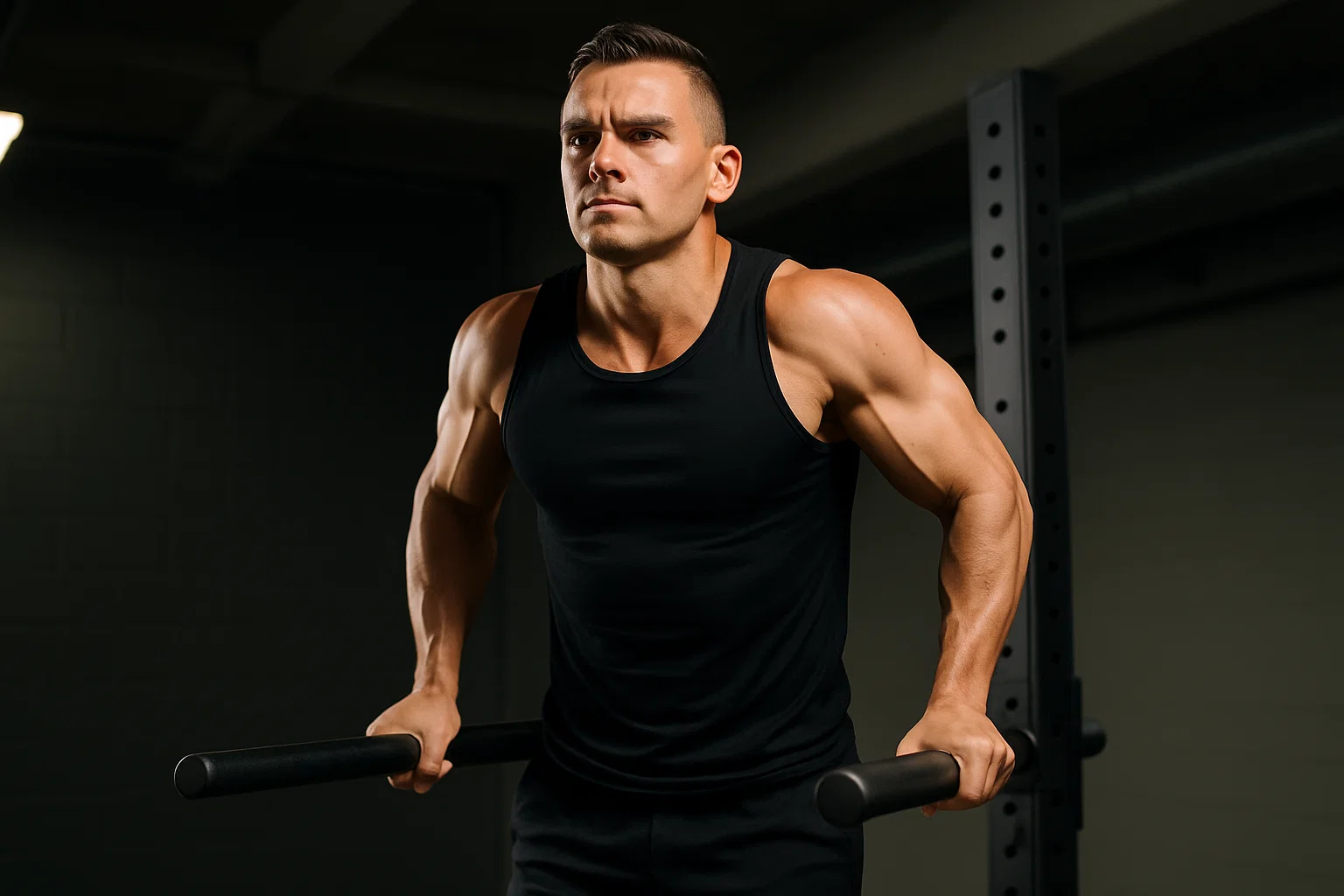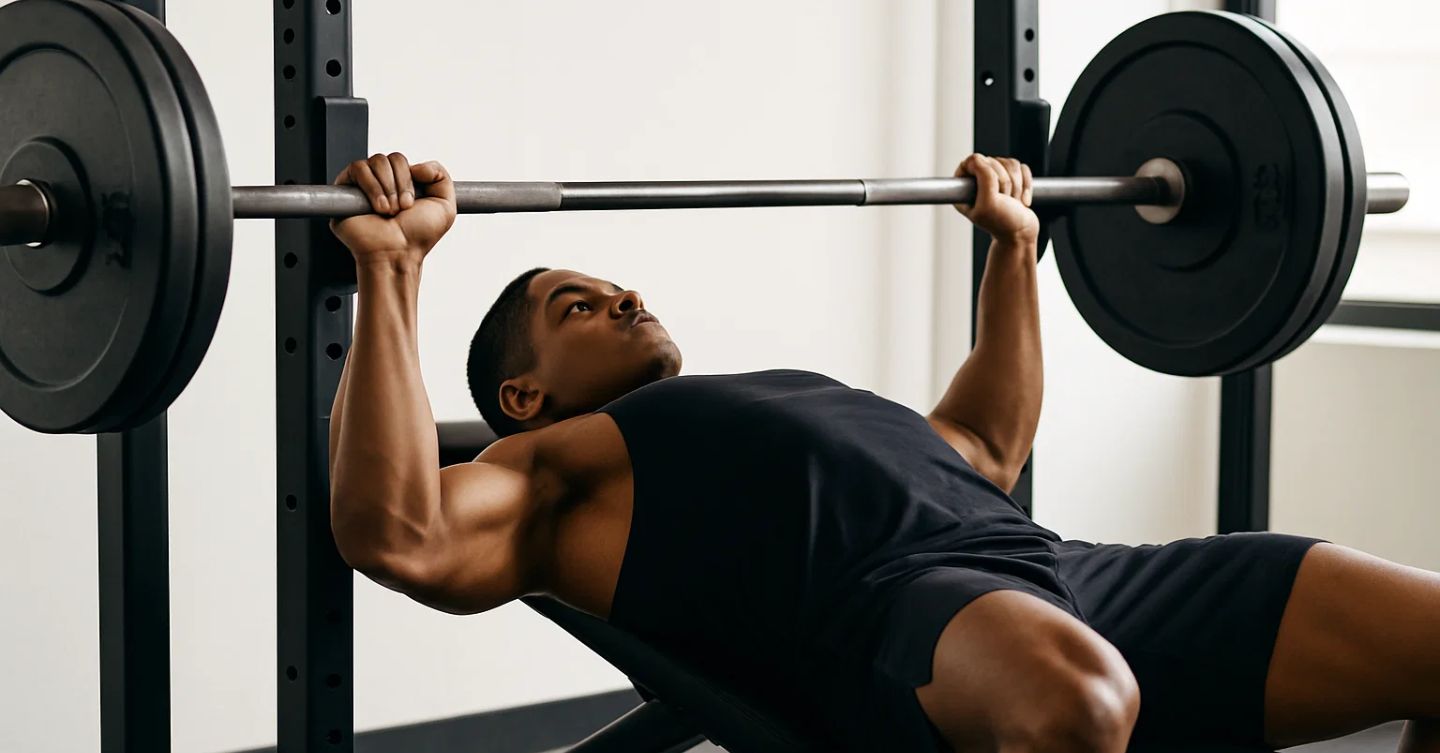The Mandatory 5-Move Chest Warm-Up
Last updated July 4, 2025 | By: GymS Informer Team

Let’s be direct. Your approach to warming up for chest day is likely holding you back. A few half-hearted arm swings or a static stretch held for 20 seconds is not a warm-up. It’s a waste of time that does little to prepare you for the demands of lifting and can even increase your risk of injury.
A professional, effective warm-up is not optional. It is a calculated protocol designed to do three things: increase performance, prevent injury, and maximize muscle growth. It primes your body by increasing blood flow, activating the correct muscle fibers, and mobilizing the joints you are about to load with heavy weight.
Forget what you think a warm-up is. This is the blueprint you will use from now on.
The Core Principles of an Effective Warm-Up
Before the exercises, understand the mission. Every movement should achieve one of the following:
- Increase Core Temperature: Elevate your heart rate slightly and pump warm, oxygenated blood to the muscles.
- Improve Mobility: Focus on the mobility of your upper back (thoracic spine) and the rotation of your shoulders. A stiff upper body means a weak and unsafe press.
- Activate Key Stabilizers: Wake up the small muscles in your back and around your shoulder blades (scapula). These muscles protect your shoulder joint and create a solid platform from which to press.
This five-move protocol is designed to accomplish all three in under 10 minutes.
The Protocol: Your 5-Minute Pre-Lifting Blueprint
Perform each movement with control and intention. The goal is activation, not exhaustion.
1. Cat-Cow
Why It’s Essential: It directly addresses thoracic spine stiffness caused by sitting. A mobile upper back allows for proper arching and scapular retraction during a press, increasing power and safety.
Execution:
1. Start on all fours, with hands under shoulders and knees under hips.
2. Cow: Inhale as you drop your belly, arch your back, and look forward.
3. Cat: Exhale as you round your spine, tuck your chin to your chest, and push the ground away.
4. Perform 10-12 smooth repetitions.
2. Wall Slides
Why It’s Essential: This is a non-negotiable movement for shoulder health. It activates the lower traps and serratus anterior—muscles critical for proper shoulder blade movement and stability.
Execution:
1. Stand with your back against a wall, feet slightly forward.
2. Place your forearms on the wall in a “goalpost” position, elbows and wrists touching the wall.
3. Slowly slide your arms up the wall until they are nearly straight, keeping your elbows and wrists in contact with the wall at all times.
4. Slide back down to the starting position.
5. Perform 10-15 controlled reps.
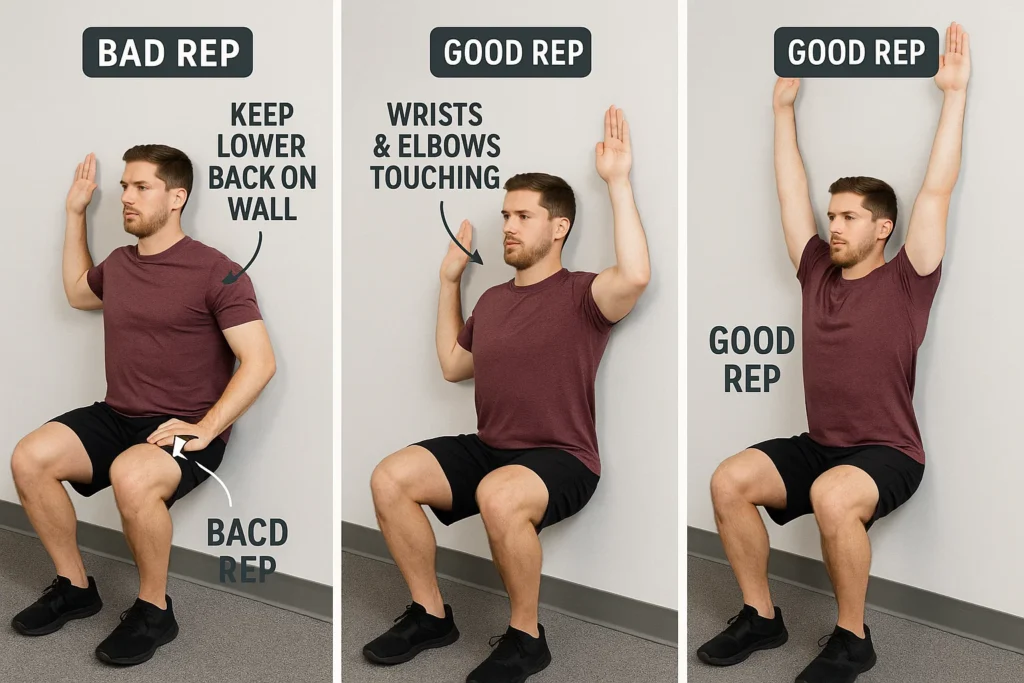
3. Band Pull-Aparts
Why It’s Essential: The ultimate activation exercise for the upper back and rear deltoids. These are the muscles that directly oppose your chest and stabilize your shoulders during pressing movements. A stronger back means a stronger, healthier press.
Execution:
1. Stand tall, holding a light resistance band with both hands, palms facing down.
2. Raise your arms straight out in front of you at shoulder height.
3. Keeping your arms straight, pull the band apart by squeezing your shoulder blades together.
4. Return to the start with control. Do not let the band snap back.
5. Perform 15-20 reps.
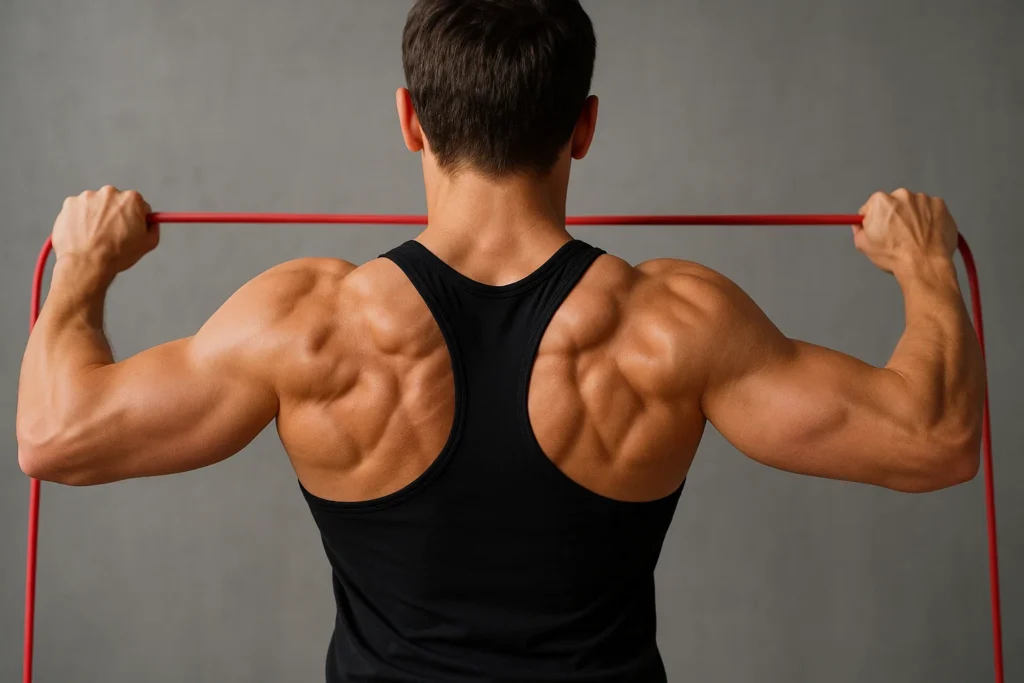
4. Dynamic Doorway Chest Stretch
Why It’s Essential: Unlike a static stretch, this move actively warms up the pectoral muscles through a full range of motion, improving flexibility and blood flow without reducing power output.
Execution:
1. Stand in a doorway and place your forearms on the frame, elbows slightly below shoulder height.
2. Step forward with one foot into a gentle stretch.
3. Instead of holding, immediately rock back out of the stretch.
4. Perform 12-15 gentle “pulses” in and out of the stretched position.
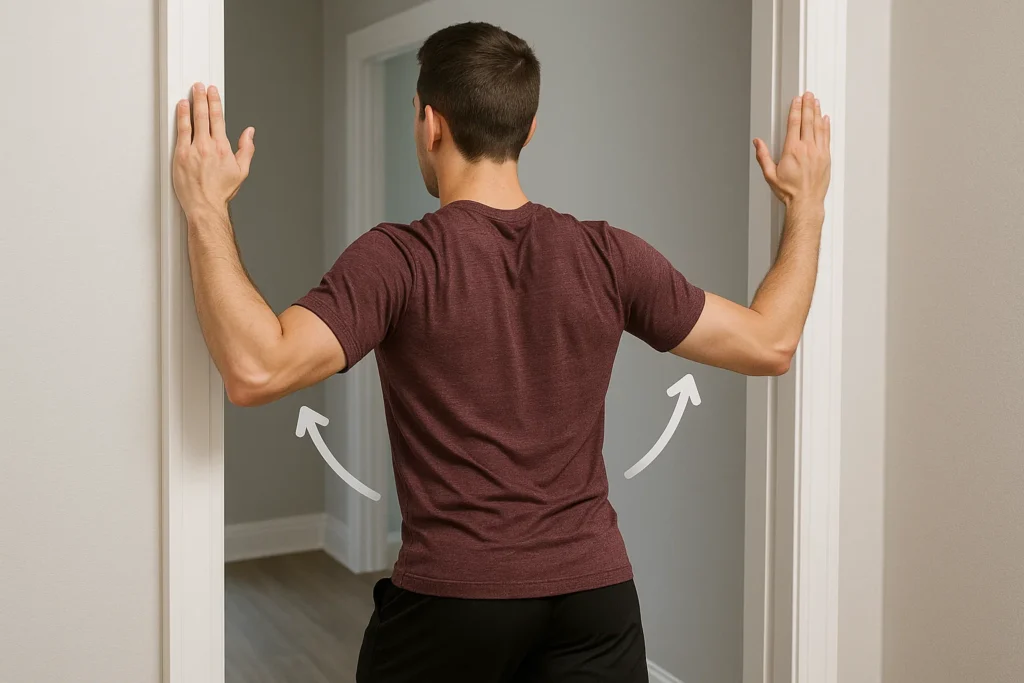
5. Scapular Push-Ups
Why It’s Essential: This isolates and activates the serratus anterior, the muscle responsible for protracting your shoulder blades. This teaches you how to create a stable base before initiating any press.
Execution:
1. Get into a high plank position, arms straight.
2. Without bending your elbows, pinch your shoulder blades together, allowing your chest to sink.
3. Then, actively push the floor away, rounding your upper back to spread the shoulder blades apart.
4. That is one repetition. Perform 10-12 reps.
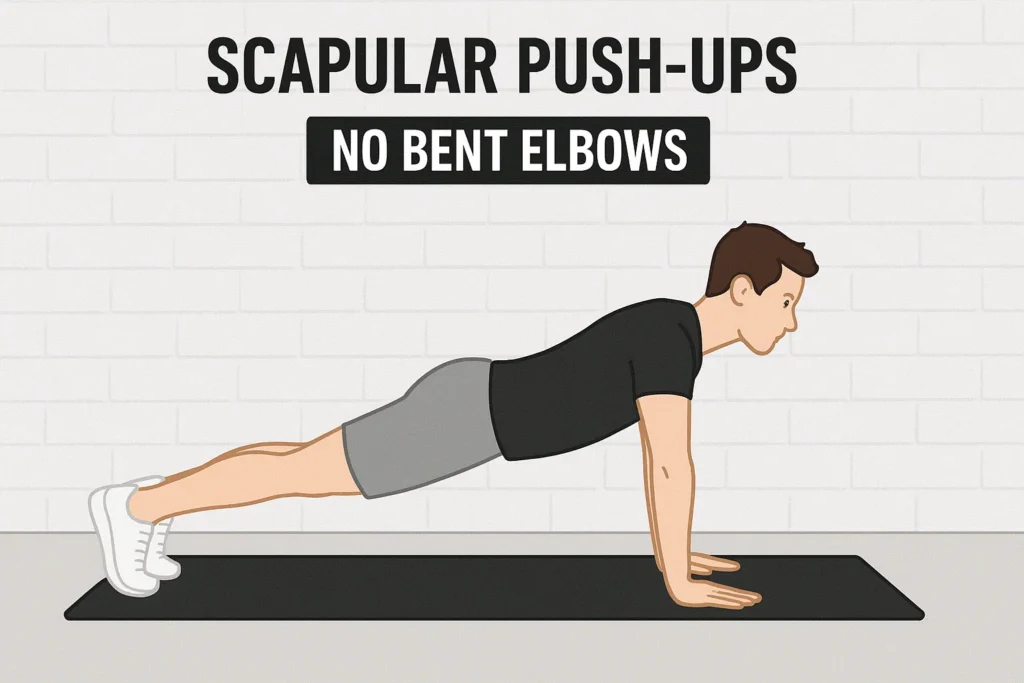
The Critical Next Step: Warm-Up Sets
Your dynamic warm-up is done. Now, you must prepare for the specific movement. Before your first heavy set of bench press (or any primary lift), you must use warm-up sets. This is how you acclimate your nervous system to the load.
Example for a 225 lb working set:
- Set 1: Bar only x 20 reps (focus on form)
- Set 2: 135 lbs x 8 reps
- Set 3: 185 lbs x 4 reps
- Begin your first working set at 225 lbs.
Never jump straight from your warm-up protocol to your heaviest weight.
Frequently Asked Questions (FAQs)
1. Is this all I need? What about cardio?
A 5-minute walk or light jog on the treadmill is acceptable to raise your body temperature, but it is not a substitute for this targeted protocol. This routine is all you need for muscular and joint preparation.
2. Should I do this before every upper-body workout?
Yes. This is an excellent, universal warm-up for any day that involves pressing movements (chest, shoulders).
3. What if I feel pain during one of the movements?
Do not push through sharp pain. Stop the movement. You can either skip it or reduce the range of motion to a pain-free zone. Persistent pain indicates a deeper issue that may require a professional evaluation.
4. Why no static stretching? I was told to hold my stretches.
Holding a stretch for 30+ seconds (static stretching) can temporarily decrease muscle power and explosiveness. It is best saved for your post-workout cool-down, not your pre-workout warm-up. Dynamic, movement-based preparation is superior for performance.



